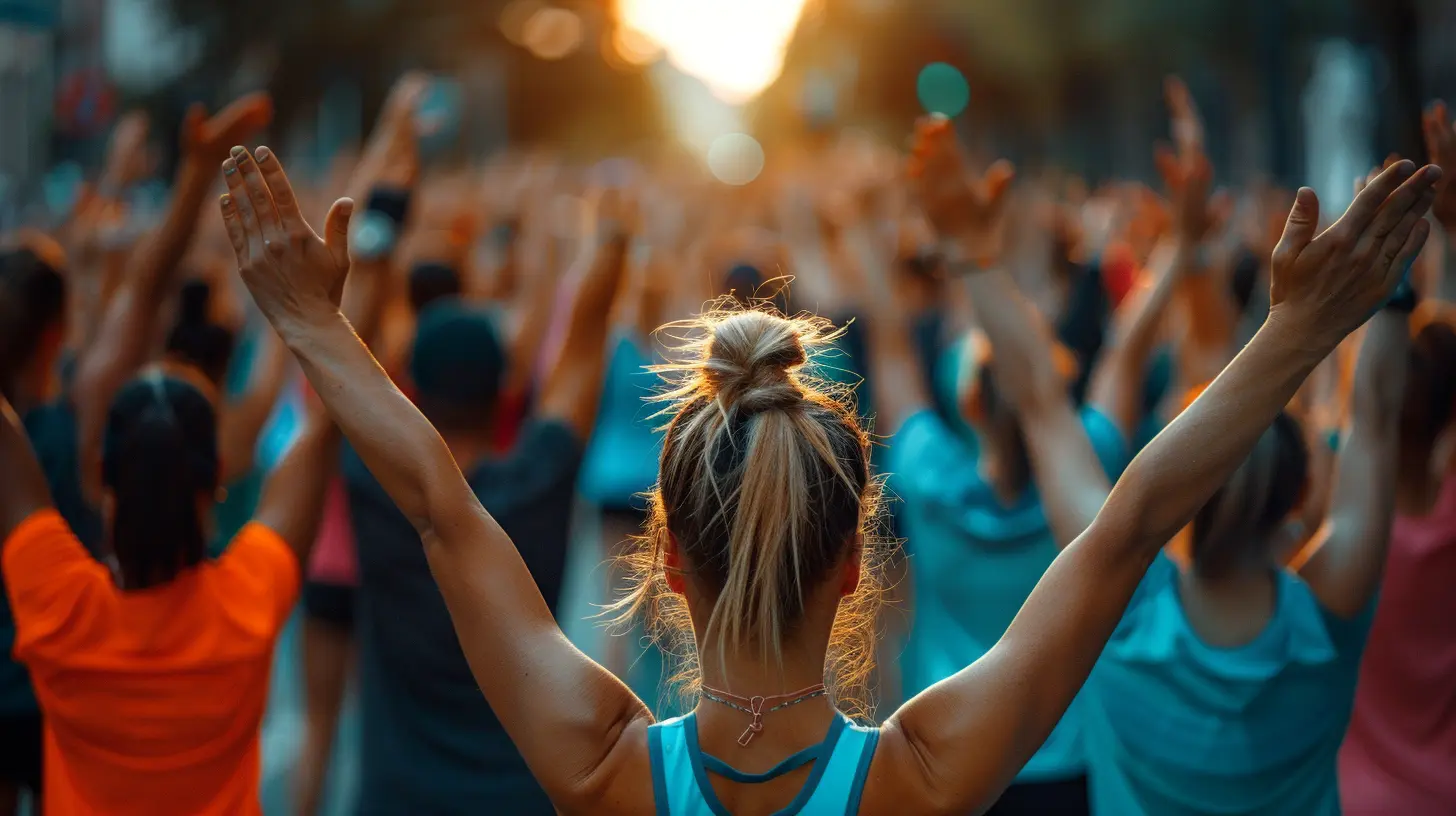The Importance of Warm-Ups and Cool-Downs in Your Routine
8 October 2025
Introduction
Picture this: you're pumped for your workout, ready to smash some personal records. You dive straight into intense exercise, only to pull a muscle or feel sluggish halfway through. Or worse, you wrap up your session and head straight for the couch, waking up the next day feeling like you've been hit by a truck. Sounds familiar? That’s what happens when you skip warm-ups and cool-downs.
They might not be the most exciting parts of your workout, but they are just as crucial as the exercise itself. Whether you're lifting weights, running marathons, or just doing a quick home workout, warming up and cooling down can make a world of difference in your performance and recovery. Let’s dive into why these simple steps should never be skipped.

Why Are Warm-Ups So Important?
1. Prepares Your Muscles and Joints
Jumping straight into an intense workout when your muscles are cold is like trying to stretch a frozen rubber band—it’s stiff, resistant, and more likely to snap. Warm-ups gradually increase blood flow to your muscles, making them more flexible and reducing the risk of injury.2. Increases Heart Rate Gradually
Think of your heart as a car engine. You wouldn’t go from 0 to 100 without warming it up first, right? A proper warm-up slowly raises your heart rate, prepping it for the intensity ahead. This helps prevent sudden spikes in blood pressure and minimizes the risk of dizziness or feeling lightheaded.3. Enhances Performance
Your body functions better when it's prepared. Warming up helps activate your nervous system, improves coordination, and increases muscle efficiency. This means you’ll move better, lift heavier, and run faster without feeling sluggish.4. Reduces Risk of Injury
A well-prepared body is less likely to suffer from strains, sprains, or tears. Warm-ups ensure your ligaments, tendons, and muscles are ready to handle the demands of your workout.5. Mentally Prepares You
A warm-up isn’t just physical—it’s mental, too. It helps you focus, get into the right mindset, and build momentum. Think of it as your brain’s way of getting in the zone before the real work begins.
What Makes a Good Warm-Up?
A solid warm-up should last about 5–10 minutes and should be tailored to your workout. Here’s what it should include:1. Light Cardio
Start with some low-intensity cardio like jogging, jumping jacks, or cycling. This slowly increases your heart rate and blood flow.2. Dynamic Stretching
Unlike static stretching (where you hold a stretch), dynamic stretching involves moving through a range of motion. Think walking lunges, leg swings, or arm circles.3. Movement-Specific Drills
If you're about to lift weights, start with bodyweight versions of your exercises. If you're running, try some high knees or butt kicks. This primes the muscles you'll be using.
The Role of Cool-Downs in Recovery
Just as you wouldn’t slam the brakes on your car after driving at high speed, you shouldn’t abruptly stop exercising. Cooling down transitions your body back to a resting state, preventing dizziness, soreness, and stiffness.1. Gradually Lowers Heart Rate
After an intense workout, your heart is still racing. Stopping suddenly can make you feel dizzy or lightheaded. A cool-down helps bring it down gradually, preventing any sudden drops in blood pressure.2. Reduces Muscle Soreness
Ever wake up the next day barely able to move? That’s delayed onset muscle soreness (DOMS). Cooling down helps flush out lactic acid (the stuff that makes your muscles ache), reducing soreness and stiffness.3. Prevents Stiffness and Tightness
Without a proper cool-down, muscles can tighten up, leaving you stiff and uncomfortable. Stretching after exercise keeps them flexible and prevents post-workout cramping.4. Helps with Recovery
A proper cool-down tells your body, “Hey, we’re done here,” and starts the recovery process. It promotes relaxation, reduces stress on your heart, and aids in muscle repair.
What Should a Cool-Down Include?
A good cool-down should last about 5–10 minutes and should focus on gradually returning your body to a resting state. Here’s what to do:1. Slow Down Your Movements
If you were running, slow down to a walk. If you were lifting, do some lighter movements. This helps ease your body out of high-intensity mode.2. Static Stretching
Unlike in warm-ups, static stretching after a workout is beneficial. Hold stretches for 15–30 seconds to elongate tight muscles and improve flexibility.3. Deep Breathing Techniques
End with some deep breathing to calm your nervous system and promote relaxation. Inhale deeply through your nose, hold for a few seconds, then exhale slowly.Common Mistakes to Avoid
Even if you warm up and cool down, there are mistakes that can make them ineffective. Here are some common errors to avoid:1. Rushing Through It
A half-hearted 30-second jog isn’t enough. Give your body proper time to adjust—5 to 10 minutes is ideal.2. Stretching Cold Muscles
Stretching before warming up can increase the risk of injury. Save static stretches for after your workout.3. Skipping It Altogether
Let’s be real—most people skip warm-ups and cool-downs because they seem boring or unnecessary. But skipping them regularly can lead to injuries, poor performance, and longer recovery times.
What Happens If You Don’t Warm-Up or Cool-Down?
Skipping these steps might not seem like a big deal—until it is. Here’s what can happen:- Increased risk of injury – Tight, cold muscles are more prone to strains and tears.
- Poor performance – Your body won’t be at its full potential, making workouts feel harder.
- Longer recovery time – Without proper cooldowns, soreness lingers longer, making it harder to stay consistent.
- Dizziness or fainting – Stopping abruptly can cause blood to pool in your extremities, decreasing oxygen flow to your brain.
Final Thoughts
Warm-ups and cool-downs may not be the most glamorous parts of a workout, but they are essential. They keep you injury-free, enhance your performance, and improve recovery time. So, next time you're tempted to skip them, remind yourself that a few extra minutes can make a world of difference. After all, what’s a workout if you can’t move the next day?all images in this post were generated using AI tools
Category:
ExerciseAuthor:

Sophia Wyatt
Discussion
rate this article
1 comments
Zephyrwind Jenkins
Great article! Warm-ups and cool-downs are often overlooked but are essential for preventing injuries and enhancing performance. Incorporating these practices can really make a difference in your fitness journey. Thanks for highlighting their importance!
October 21, 2025 at 3:02 AM


